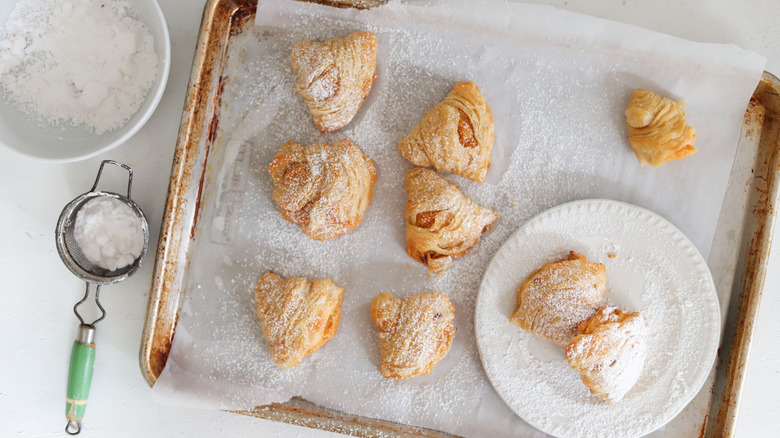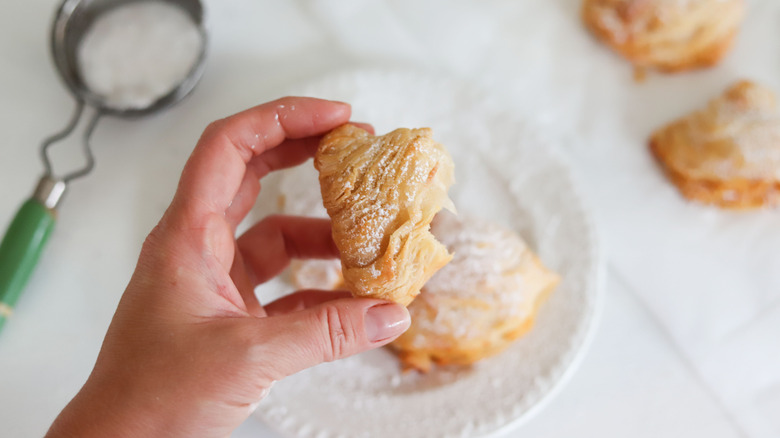For Sweeter Italian Lobster Tail Pastries, Fill With Cream Instead Of Ricotta
If you've ever enjoyed a lobster tail pastry, you know the incredible sensation of buttery pastry layers combining with a creamy ricotta center coming together for a magical bite, but sometimes that traditional ricotta center doesn't satisfy the sweetness we look for in a pastry. Tasting Table recipe developer Leah Maroney's solution is to use a decadent cream filling, as seen in her Italian Lobster Tail Pastry Recipe. This recipe still contains all the components that make a lobster tail pastry but with a simple switch for the filling.
"Ricotta is often used in the filling, but I opted for a sweeter, thicker filling more like pastry cream," explains Maroney.
Pastry cream is most commonly used in pastries such as cream puffs and eclairs, and typically, it's reserved for decadent desserts. When used as the filling for Maroney's lobster tail, the result is a sweet surprise. To balance the pastry and reign in some of that richness, Maroney calls for orange zest to be grated into the cream. This addition of bitterness helps cut through the richness of the pastry. Bitterness acts as a way of clearing our palette so our taste buds don't become overwhelmed while eating. A pinch of salt is also added to bring out the flavors of the cream. Salt is an essential component when baking; just a pinch of salt can balance your dish and bring out the best of all the flavors present.
Filling the pastry with cream
When you begin to fill your dough with the pastry cream, take your time to make sure your lobster tails are fully sealed and shaped. Unlike other desserts, you add the cream filling before baking, and once you bake them, there's no going back to correct your work. Maroney calls for two tablespoons of filling for each pastry. When shaping your lobster tail dough, keep this amount in mind so you can make the filling hole deep enough, but use a gentle hand to preserve the delicate layers of the dough.
After you spoon in your pastry cream, you'll seal the edges of the dough together by gently pressing them together. It's crucial to ensure your lobster tails are well sealed, or you could lose that delicious filling. Maroney demonstrates sealing the edges using her thumb and index finger; this gives her a precise movement to close up her pastry. Before you bake off your lobster tails, double-check that there are no holes or leakage from any of your pastries. If you notice any small gaps, press your edges one more time to seal them as best as possible.

